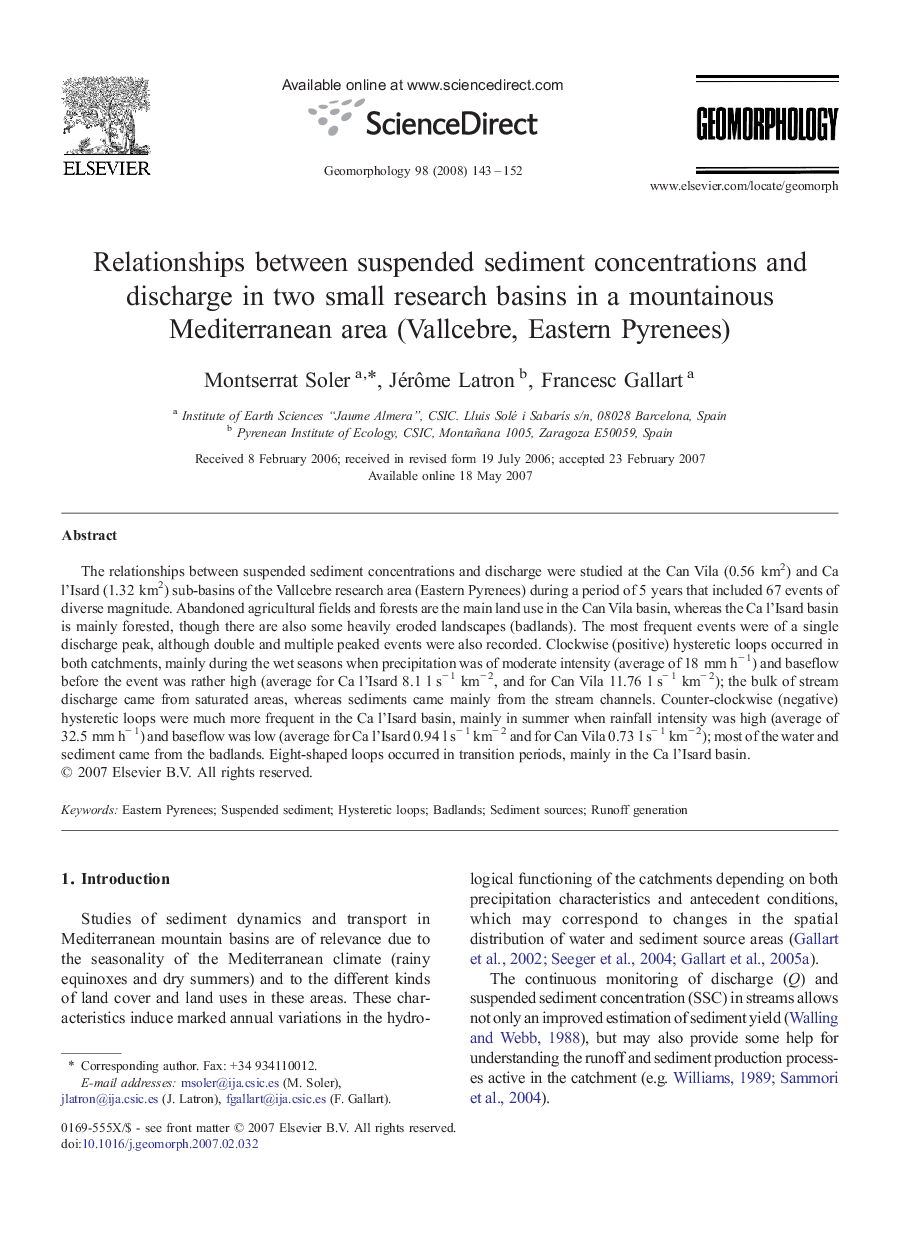| کد مقاله | کد نشریه | سال انتشار | مقاله انگلیسی | نسخه تمام متن |
|---|---|---|---|---|
| 4686819 | 1635557 | 2008 | 10 صفحه PDF | دانلود رایگان |

The relationships between suspended sediment concentrations and discharge were studied at the Can Vila (0.56 km2) and Ca l'Isard (1.32 km2) sub-basins of the Vallcebre research area (Eastern Pyrenees) during a period of 5 years that included 67 events of diverse magnitude. Abandoned agricultural fields and forests are the main land use in the Can Vila basin, whereas the Ca l'Isard basin is mainly forested, though there are also some heavily eroded landscapes (badlands). The most frequent events were of a single discharge peak, although double and multiple peaked events were also recorded. Clockwise (positive) hysteretic loops occurred in both catchments, mainly during the wet seasons when precipitation was of moderate intensity (average of 18 mm h− 1) and baseflow before the event was rather high (average for Ca l'Isard 8.1 l s− 1 km− 2, and for Can Vila 11.76 l s− 1 km− 2); the bulk of stream discharge came from saturated areas, whereas sediments came mainly from the stream channels. Counter-clockwise (negative) hysteretic loops were much more frequent in the Ca l'Isard basin, mainly in summer when rainfall intensity was high (average of 32.5 mm h− 1) and baseflow was low (average for Ca l'Isard 0.94 l s− 1 km− 2 and for Can Vila 0.73 l s− 1 km− 2); most of the water and sediment came from the badlands. Eight-shaped loops occurred in transition periods, mainly in the Ca l'Isard basin.
Journal: Geomorphology - Volume 98, Issues 1–2, 1 June 2008, Pages 143–152